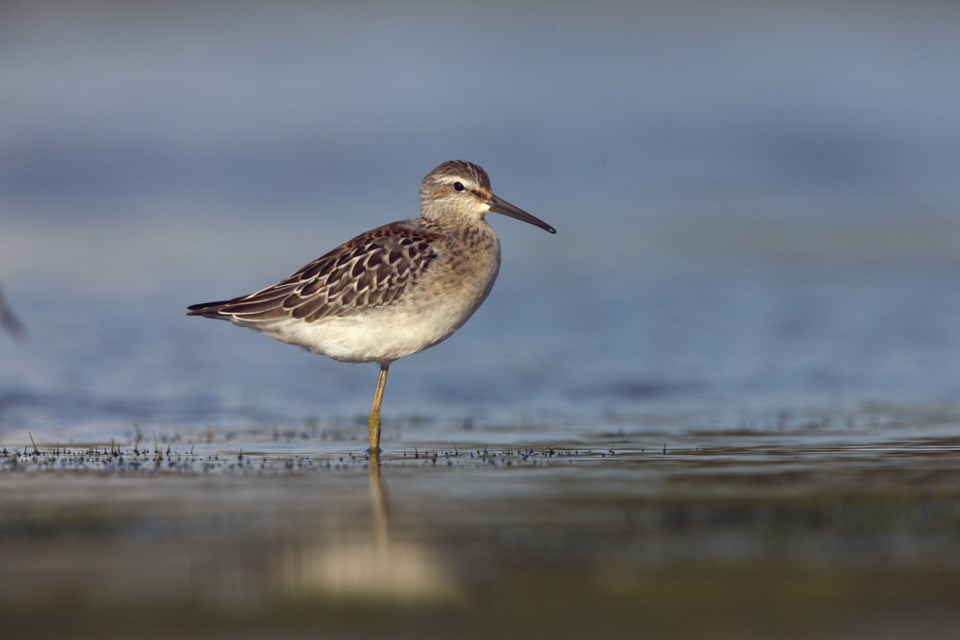Conservation work on the Missouri Coteau by the Nature Conservancy of Canada (NCC) was outlined at the Chaplin Shorebird Festival dinner.
The Missouri Coteau ranges from sandstone badlands to alkaline waters with rolling hills from the U.S. border to North Battleford, said Mike Burak, NCC southwest Saskatchewan director.
“Since 2002, 134 endangered or threatened species of plants and animals have been reported in the Coteau.”
Fourteen of 53 Saskatchewan birding areas are in the Coteau.
The Chaplin lake complex is an international hemispheric shorebird reserve – only one of three in Canada and supports critical habitat for birds and migrating birds, he said.
Since founding in the early 1960s, the NCC has acquired ownership/management of 2.8 million acres of habitat land across Canada with 280 properties conserved to protect diversity forever.
Properties are either bought from a willing buyer or a conservation easement agreement is signed with the landowner and attached to the land title.
In Saskatchewan NCC has 71,613 acres of conserved land with just over 15,000 acres owned and about 55,000 acres in easements. The easements represent one-third of the organization’s total easements.
The NCC discovers available land, assesses the critical habitat condition, secures it, prepares an inventory of terrain, plants and animals and things like fences and buildings that need teardown, water holes and maps them.
A five-year plan is developed to manage the property and targets are set. Each property is monitored with annual visits to properties under conservation easement, Burak said.
A map of findings makes it easier for leasees.
“About 90 per cent of all the properties we own are grazed every year,” said Mike Burak.
Some are rested to enhance plant growth. In others NCC will reseed native prairie grass varieties.
One of the recent acquisitions is the Hole In The Wall property seven miles north of Big Muddy Lake near the U.S. border. The 2,240 acre property is critical habitat with wetlands and is native prairie except for a piece of unproductive tame grass.
This property was acquired in an online auction — not the usual way.
“There was a public outcry” when the Crown-owned property was sold. The buyer turned the land back to the crown. After an appraisal NCC bid at the online auction.
The property is leased to two ranchers, one whose great-great-grandfather’s original ranch was on the site
Kayden Burak, NCC engagement manager, outlined the volunteer program used to supplement staff.
“A big part of what we do is getting people out on our properties. We do ask that you let us know you are there.”
Under the property watch, anyone can adopt a property and monitor it for NCC when they have time. You don’t need to know about plants and wildlife.”
Last year 158 volunteers worked 729 hours on 14 projects. “The volunteer program is really important to us” given the ratio of staff.
An upcoming volunteer event is planting milkweed for monarch butterfly habitat.
Ron Walter can be reached at [email protected]




